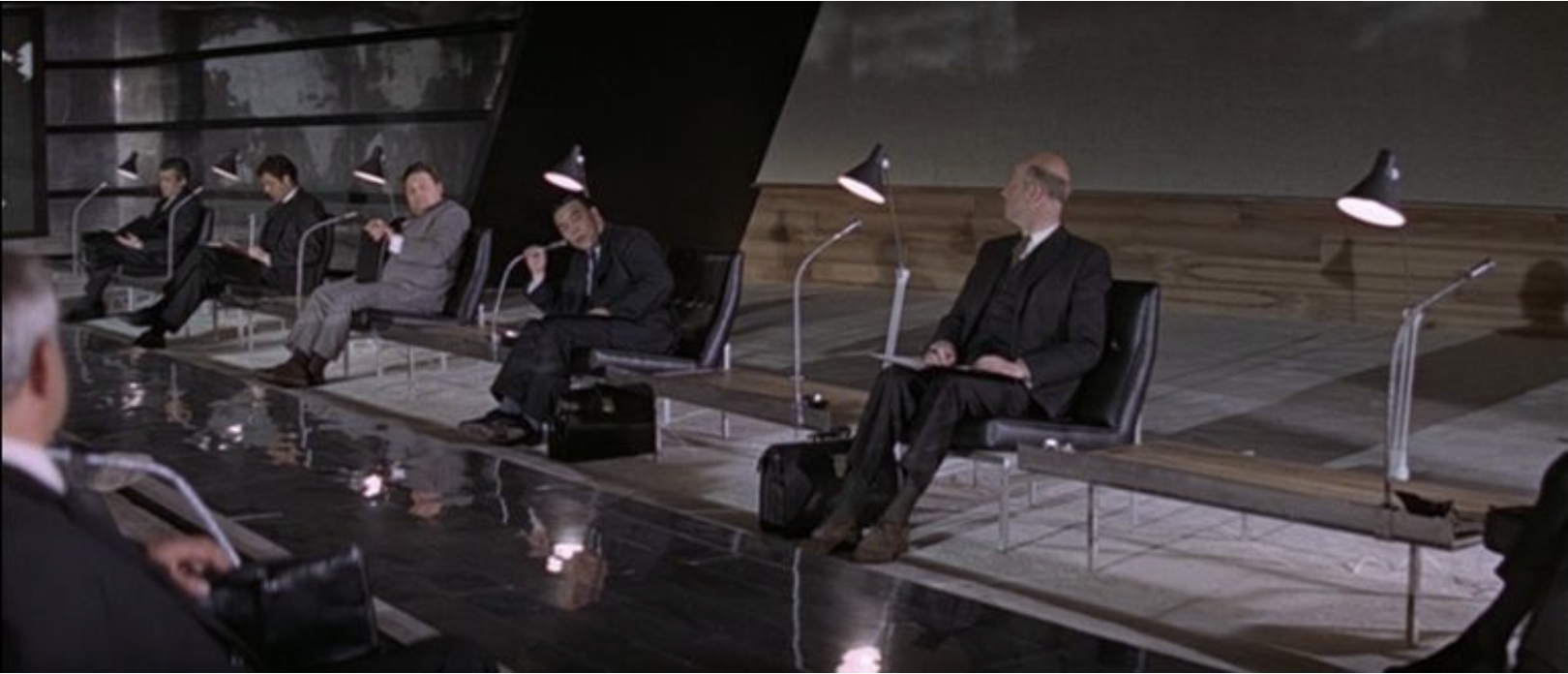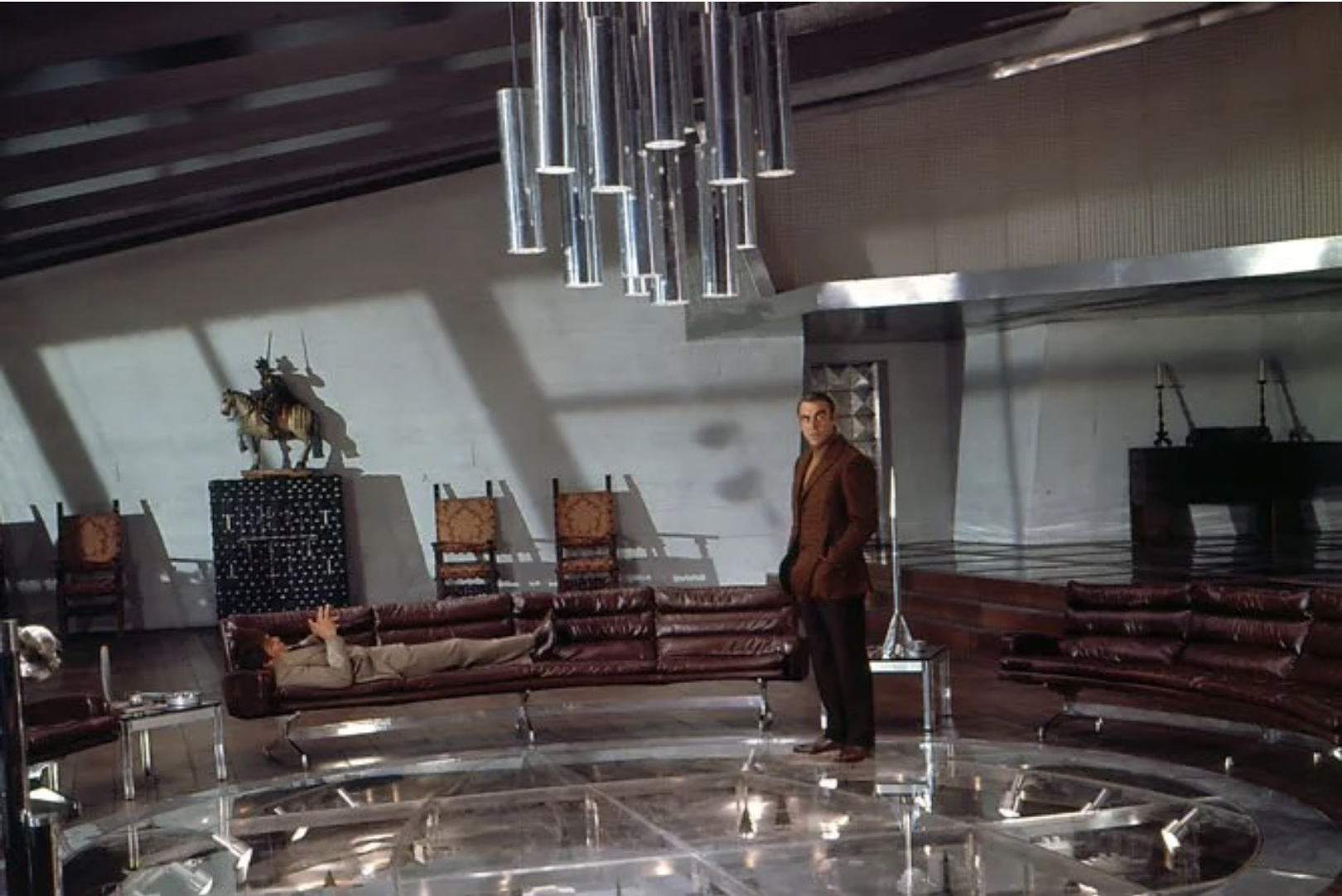Eames
Shell, Yeah
Published: 8/24/2022
By: Gordon Dawson
Having grown up a TV buff of the 70s, I quickly could discern a great show not only by the characters portrayed but also by the set decor. Unknowingly, I guess, I realized early on that I had a thing for design, Interior Design, to be specific. Proper furniture, placement, scale, fabrics, textures, color, lighting, composition, and coordination all played a vital role in the inspiration to form my obsession with good design. In addition, there were shows like The Brady Bunch, The Dick Van Dyke Show, The Mary Tyler Moore Show, The Odd Couple, and countless others portraying characters in the iconic Mid Century Modern era. These shows were my parent's favorites but subliminally instilled an appreciation for the style and decor used as set props in these popular tv shows. Likewise, my favorite movies are any James Bond films routinely showcasing the mid-century modern sense of pizzaz. You can see this incredible sense of decor in Dr. No, Goldfinger, The Man with the Golden Gun, Diamonds Are Forever, Thunderball, etc. Finally, don't forget The Jetsons and all the inspiration that show has spawned in the world of modern decor.
I've always wanted to have the 50's vibe of furniture in my home. Over the years, we've acquired some pieces that represent the time, but not really anything original or authentic enough to say we own a piece of mid-century modern. However, recently, my wife stumbled across a unique fiberglass chair from the power couple of Charles and Ray Eames. Appearing on the market in 1950, my Eames Fiberglass Chair is rough and needs tender loving care. Still, if you look closely, it's stamped with the Herman Miller signature, making it an authentic piece of iconic furniture. I fell in love with the color, shape, and texture created from the fiberglass and wanted to learn a little more about the history of this chair.
Founded in 1905 as the Star Furniture Co, Herman Miller Inc. is an American company that produces office furniture, equipment, and home furnishings, including the Aeron Chair, Noguchi Table, Marshmallow sofa, and the Eames line of furnishings. As part of the furnishing family, the Eames Shell Chair was designed on the principle of adaptability, offering various configurations to serve multiple applications and environments. It makes the chair a classic worthy of museum collections, living rooms, laundromats, lobbies, and cafés. It makes it a great first piece of furniture to buy in your twenties that's still worthy and relevant enough to hand down to your children 20 years later. A diverse selection of shell, base, color, and finish options enables you to create your perfect chair. The Eames continued to push the boundaries of the shell chair. After experimenting with single-form plywood and stamped metal, they turned to fiberglass and experimented with bent wire. When fiberglass production proved unhealthy for the environment, Herman Miller decided to switch production to a safer plastic. With advancements in safe fiberglass composition and dynamic veneer technologies, the evolution continues with the Molded Fiberglass and Molded Wood Chairs.
The chair was originally designed for the International Competition for Low-Cost Furniture Design, motivated by the urgent need in the post-war period for low-cost housing and furnishing designs adaptable to small housing units. The chair was offered in a variety of colors and bases, such as the "Eiffel Tower" metal base, a wooden base, and a rocker base making this chair one of the most famous designs and still popular today. The material of the chair, Zenaloy, polyester reinforced with fiberglass, was first developed by the US Army during World War II. Mass-producing the molded fiberglass chairs involved:
A tremendous amount of design and tooling effort.
A long period of product development.
Considerable investment.
The production technology involves using a hydraulic press to shape the fiberglass material with metal molds. The armchair was the first one-piece plastic chair whose surface was left uncovered and not upholstered. In 1950, Zenith began mass-producing the fiberglass shell armchairs for Herman Miller, who offered them for sale that year. The fiberglass armchair was added to the Museum of Modern Art collection in 1950.
The Vitra company entered the furniture market in 1957 with the licensed furniture production from the Herman Miller Collection for the European market. In 1984, the partnership was terminated by mutual consent, allowing Vitra to obtain the European and Middle eastern rights to Eames designs. The chairs are still in production by Herman Miller and Vitra. However, each producer uses different material for their chair. In 1993, Vitra discontinued the production of fiberglass shells for ecological reasons. The company resumed manufacture of the shells in 1989 and 2004, respectively, making them available in polypropylene, a more environmentally friendly material. The production process for the new fiberglass chairs by both manufacturers is now emission-free. It uses a new, monomer-free resin which creates a safer environment for workers and a more environmentally friendly, recyclable shell. The chairs are still available and, after over seventy years, still commonly used by popular interior designers and featured in many magazines.
Sources: Wikipedia
Thoughts
– What's your favorite style of furniture or architecture?
– Did TV/movies from your childhood influence your design tastes?
– Do you own any artifacts seen in your favorite shows or movies?






